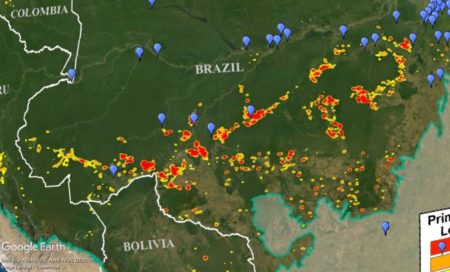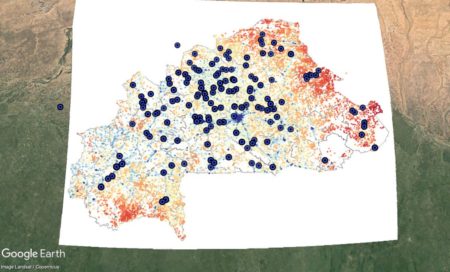- University of Chicago Press series on food & drink: Edibles.
- An Indian farmer who’s really into tuber diversity is featured in The Hindu.
- “We are a public access seed bank – not a commercial seed company. You will find that our presentation of information and how you access our seedbank is a bit different from ordering seeds from the usual on-line commercial enterprise.”
- Italian university maps agrobiodiversity.
- Maize data in USDA’s GRIN database includes Indigenous group.
Brainfood: Chickpea genomes, DIIVA, Maize evolution, Malting barley, Wild gluten, Cucurbit review, Coconut genome double, USDA rice collection, CIAT bean collection, PGRFA data integration, USA cattle diversity, PGRFA history
- A chickpea genetic variation map based on the sequencing of 3,366 genomes. Where the good and the bad alleles are. Even The Economist is impressed.
- Crop Wild Relatives Crosses: Multi-Location Assessment in Durum Wheat, Barley, and Lentil. There are lots of good alleles in the wild relatives.
- The arches and spandrels of maize domestication, adaptation, and improvement. Some alleles are good by accident, and that’s ok.
- Malting Quality of ICARDA Elite Winter Barley (Hordeum vulgare L.) Germplasm Grown in Moroccan Middle Atlas. Here are some alleles for good beer.
- High molecular weight glutenin gene diversity in Aegilops tauschii demonstrates unique origin of superior wheat quality. And here are some alleles for good gluten. In a wild relative from unexpected place, as it turns out. More in the press release.
- Genetic resources of bottle gourd (Lagenaria siceraria (Molina) Standl.] and citron watermelon (Citrullus lanatus var. citroides (L.H. Bailey) Mansf. ex Greb.): implications for genetic improvement, product development and commercialization: a review. Not just good as rootstocks, and lots of alleles to play with.
- Coconut genome assembly enables evolutionary analysis of palms and highlights signaling pathways involved in salt tolerance. Looks like coconut might have lost a lot of good alleles at the end of the Pleistocene glaciations.
- High-quality reference genome sequences of two coconut cultivars provide insights into evolution of monocot chromosomes and differentiation of fiber content and plant height. The same gene controls height in coconuts as in maize and rice.
- Enhancing the searchability, breeding utility, and efficient management of germplasm accessions in the USDA−ARS rice collection. And now you can look for rice germplasm with the good height allele you want.
- History and impact of a bean (Phaseolus spp., Leguminosae, Phaseoleae) collection. Hopefully will be able to do the same for this bean collection soon.
- Integrating Genomic and Phenomic Approaches to Support Plant Genetic Resources Conservation and Use. The above, summarized.
- Gene Bank Collection Strategies Based Upon Geographic and Environmental Indicators for Beef Breeds in the United States of America. The above, plus environmental data, for cattle.
- History of Global Germplasm Conservation System. The above, writ large.
Questioning maps
As regular readers know all too well, I can’t resist a map mashup. So when I saw the latest data on deforestation in the Amazon, I fired up MapWarper and GoogleEarth and got to work.
And here’s a look at how recent deforestation in Brazil relates to the localities of past cassava collecting, at least as far as Genesys knows about it.
Now, I don’t know in what way deforestation (and associated disruptions) relates to loss of cassava diversity, but there’s a chance that it might. Could make an interesting PhD project for someone.
Anyway, encouraged by my pretty result, and remembering that I wanted to do something with some shiny new maps I had heard about, I next mashed up sorghum accessions and poverty in Burkina Faso. Here’s what I got.
What’s going on? Why are there relatively fewer sorghum accessions where poverty is higher (more red)? Are those places just harder to reach? Or do people there really grow less sorghum.
Again, I don’t know. But I think it would be interesting to find out.
All speculation welcome in the comments.
Brainfood: RICA, AEGIS, CWR, Agrosavia, DSI, CRISPR, Tradition, SNS, Stability, Birds, Sparing, Genetic erosion
- RICA: A rice crop calendar for Asia based on MODIS multi year data. RiceAtlas validated. Still trying to figure out how to mash it up with genebank accession locality data though. Any GIS geniuses out there to help me?
- AEGIS, the Virtual European Genebank: Why It Is Such a Good Idea, Why It Is Not Working and How It Could Be Improved. Certify genebanks, that’s how.
- Reap the crop wild relatives for breeding future crops. Needs good data and certified genebanks. Plus gene editing.
- Opportunities and Challenges to Improve a Public Research Program in Plant Breeding and Enhance Underutilized Plant Genetic Resources in the Tropics. Needs better social networking. Plus better data and certified genebanks, presumably.
- From seed to sequence: Dematerialization and the battle to (re)define genetic resources. Ah yes, data.
- Current Advancements and Limitations of Gene Editing in Orphan Crops. Ah yes, gene editing.
- Revitalizing Traditional Agricultural Practices: Conscious Efforts to Create a More Satisfying Culture. Meanwhile, in Sweden…
- Sacred natural sites and biodiversity conservation: a systematic review. Of course sacred sites are good for biodiversity. But it’s always good to have the data.
- Global relationships between crop diversity and nutritional stability. Sacred sites are not enough, alas.
- Preserving local biodiversity through crop diversification. Crop diversity is even good for birds…
- Concentrating vs. spreading our footprint: how to meet humanity’s needs at least cost to nature. …but, overall intensification of agriculture coupled with sparing land for conservation (maybe even in sacred sites) is the best approach for wildlife. And humanity, for that matter. So, back to needing better data from certified genebanks, so we can get that intensification done, right?
- Quantifying the scale of genetic diversity extinction in the Anthropocene. Right!
Brainfood: Cola trade, Amalfi terraces, Satoyama value, Burkinabe cattle, Tree planting, Chickpea adoption, Varietal diversification, Wheat diversity, Maize adaptation, Stress breeding, Root & tubers, Cropping data
- Evidence of an Eleventh-Century AD Cola Nitida Trade into the Middle Niger Region. Before then, there was not much trade between the savannah and forest zones of West Africa, which is kind of remarkable.
- Risk factors and plant management activities for the terraced agricultural systems on the Amalfi coast (Italy): an interdisciplinary approach. The terrace walls need agriculture just as much as agriculture needs the walls. Had me wondering whether those terraces were there when the cola trade started up in West Africa.
- Nexus of the awareness of ecosystem services as a “public-benefit value” and “utility value for consumption”: an economic evaluation of the agricultural culture of Satoyama in Japan. Ecosystem services are hard to sell. Probably in Amalfi too, I bet.
- Values and Beliefs That Shape Cattle Breeding in Southwestern Burkina Faso. Community-based breeding programmes need trusted leadership. Don’t we all.
- Limited effects of tree planting on forest canopy cover and rural livelihoods in Northern India. Decades of tree planting wasted. If only there had been better leadership.
- Unplanned but well prepared: A reinterpreted success story of international agricultural research, and its implications. Yeah, but even when an intervention is a success, as in this case, the reasons are beyond the control of researchers. The lesson: plan for the unplannable…
- Smallholder farmer engagement in citizen science for varietal diversification enhances adaptive capacity and productivity in Bihar, India. …and bet on diversity, of course…
- Introducing Beneficial Alleles from Plant Genetic Resources into the Wheat Germplasm. …like wheat breeders have been doing…
- A B73 x Palomero Toluqueño mapping population reveals local adaptation in Mexican highland maize. …and maize farmers too for that matter.
- Developing climate-resilient crops: improving plant tolerance to stress combination. And the need for diversity is only going to increase.
- Suitability of root, tuber, and banana crops in Central Africa can be favoured under future climates. I wouldn’t plan on it though…
- A review of global gridded cropping system data products. …but it’s good to finally know how all the different products that can be used to make these predictions stack up against each other.

